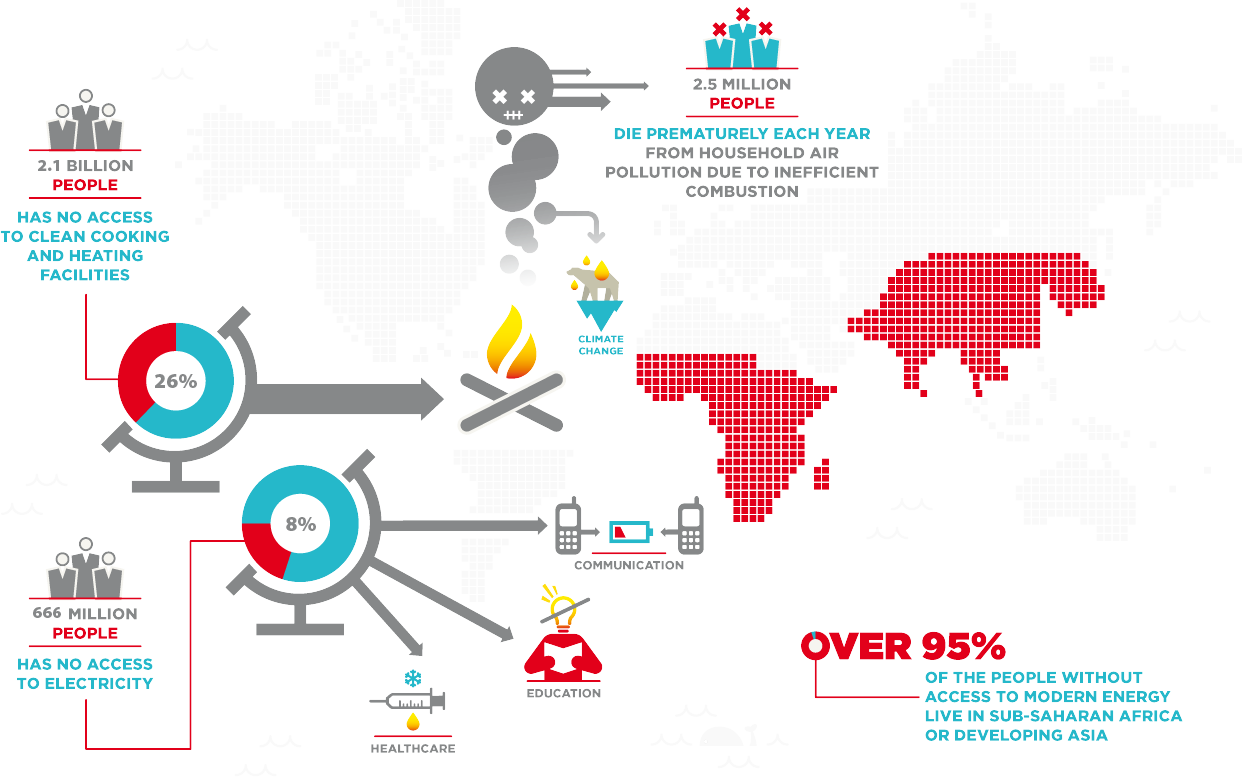Access to Modern Energy: Progress and Remaining Gaps
Ensuring universal access to modern energy – reliable electricity and clean cooking facilities – is at the heart of Sustainable Development Goal 7 (SDG 7). Global progress continues, but millions of people still live without these essential services, especially in sub-Saharan Africa and parts of Asia.
Electricity Access
Access to electricity has improved steadily worldwide. According to the International Energy Agency (IEA), almost 92% of the global population had access to electricity in 2023, leaving about 666 million people still without power.
Despite recent gains, progress remains uneven: under current policies, an estimated 645 million people will still lack access by 2030 – around 85% of them in sub-Saharan Africa. Rural areas remain the hardest hit, while many urban centres have seen major improvements.
In Central and Southern Asia, electrification efforts have made strong progress – the number of people without access fell from about 414 million in 2010 to 27 million in 2023. In contrast, sub-Saharan Africa continues to face a widening gap due to rapid population growth, limited infrastructure, and financial constraints.
Some regions in Latin America and the Caribbean have reached near-universal access, though isolated rural communities remain underserved.
Clean Cooking Facilities
While electricity access has advanced, progress in clean cooking remains slower.
In 2022, about 74% of the global population had access to clean fuels and technologies for cooking – leaving approximately 2.1 billion people still relying on polluting fuels such as wood, charcoal, kerosene, and coal.
Regional disparities are severe:
-
In sub-Saharan Africa, only 7% of rural households have access to clean cooking solutions – the lowest share globally.
-
In Asia-Pacific, nearly 1.2 billion people still lack clean cooking access, making up more than half of the global total.
-
Regions such as Latin America and the Caribbean have made strong progress, but remote or low-income areas continue to face barriers linked to affordability and infrastructure.
If current trends continue, only 79% of the world’s population is expected to have access to clean cooking by 2030, leaving about 1.8 billion people behind.
The 2030 Agenda and Sustainable Development Goal 7
In 2015, the United Nations adopted the 2030 Agenda for Sustainable Development, which includes 17 Sustainable Development Goals (SDGs) to end poverty, fight inequality and injustice, and tackle climate change by 2030.
SDG 7 is dedicated to “Ensure access to affordable, reliable, sustainable and modern energy for all” – a major challenge for the global community.


The issue of access to modern energy may be analyzed from various points of view. We have identified three main perspectives: social inclusion, economic development and environmental preservation.

To make energy access sustainable and effective in the long term we must consider different technical or political solutions. This web-site presents a variety of solutions and examines the use of different energy sources, technologies and business models.
